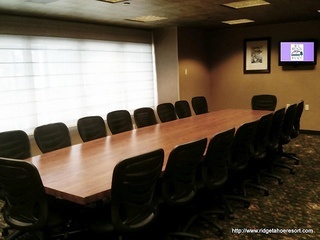The title of this post sounds pretty straight forward and obvious. Leadership activities are practice grounds for developing one’s skill set. The importance of a leadership activity is to establish the foundation for success. During this time, we are focusing on opportunities while imagining ourselves being successful.
During the leadership activity, we need to use positive thinking and avoid reflection on failures. The point of leadership activities is to develop skills, so we feel confident in executing strategic plans. This is a time to practice helping our followers achieve their goals as well as that those of the organization.
Leadership activity is like taking time to learn new skills in a classroom. During this phase, we have an opportunity to determine the important qualities that deliver the desirable results. This is an opportunity to engage in action and flesh out new ideas that will be transferable in the future.
A leader does not get to their position by accident. They need opportunities to practice their craft and develop the architecture for implementing innovative ideas. For example, musicians don’t get any better without continually practicing their craft but rather do so by taking the time to prepare.
Planning an Activity
Leaders and managers with the help of human resources can offer team building experiences in a relatively short period. Here are some steps to planning a leadership activity.
- Make the activity simple.
- Utilize your available resources to make the experience beneficial but inexpensive.
- Consider the customary attire of the organization. You are not going to jump in the mud with a business suit.
- Use smaller groups so that everybody can be involved in the activity and share their perspective and feel involved.
- Be open to innovative ideas to problems. Welcome all ideas and use them to provide a better solution to the problem.
- Take the time to recap and share important lessons with the group.
Dimensions of a Good Activity
There are four core elements of leadership that can be categorized into establish, explore, organize, and facilitate. Leadership activities can be applied to each dimension to build and foster skills in that particular arena. The following is examples of activities that will help an individual’s growth in that area.
Establish
- Fundraising
- Budgeting
Explore
- Journaling
- Meditating
Organize
- Team Building
- Ice Breakers
Facilitate
- Planning an Event
- Marketing an Event
Reasons for Choosing an Activity
Participating in a leadership activity allow individuals to learn, stimulate, motivate, and influence. These attributes describe the role of leadership and can only get better with implementation. Implementation is the key to action.
During a leadership activity, people role play to discover how actions and words can imitate a response. During role playing, leaders are able to analyze and evaluate outcomes without fearing any consequences. Role playing is a great time to try new approaches to situations.
Through exploration and discovery, leaders can stimulate their minds as they reflect on the cues that cause them to respond. They are also able to take the time to think about what they can do differently and practice through repetition.
Taking the time to communicate with others can also re-energize ones batteries and motivate people to take different actions when the situations matter. By experiencing successful outcomes leaders are more likely to take similar actions in the future.
Another reason for participating in a leadership activity is to develop influencing skills. Taking the time to learn about leadership helps one become a better influencer as they learn what works and what to avoid. Furthermore, these types of training sessions allow leaders to interact with their peers and become aware of key movers who possess certain abilities and know who can aid them during difficult times.
7 Activities to Do to Build Leadership Skills
Here are seven leadership activities that you may find useful to get started.
- Mandala- Find an object in the room that you resonate with and tell those around you why you feel it is a good match.
- Mine Field- Create obstacles in a space. Afterwards take turns blindfolding each other and after that circumnavigate the obstacle to get to the other side. This activity is particularly useful to practice effective communication.
- Egg Drop- Create teams and provide the teams with materials to protect their egg from a second-story egg drop. You will likely discover this activity is useful in helping a team find innovative ideas to problems.
- Picture This- The leader uses a series of pictures that form a time line and mix them up. Next, each person is given a random picture to each person. Without showing the picture to others they need to describe what is occurring and get the pictures back in chronological order.
- Small Spaces- The group is challenged to get everyone inside a predefined space.
- Survivor- Give your team a scenario where they must decide which items are useful given the situation and what items are most valuable.
- Quote Snatch- Place a series of quotes around the room. Each member is later asked to stand by the quote they like best. The leader will go around the room asking why that quote is so important to the person.
Conclusion
There are a number of reasons why you should offer and participate in a leadership activity. The activity can be quick but effective while learning and teaching important lessons that will help your team increase productivity and improve working relationships.
